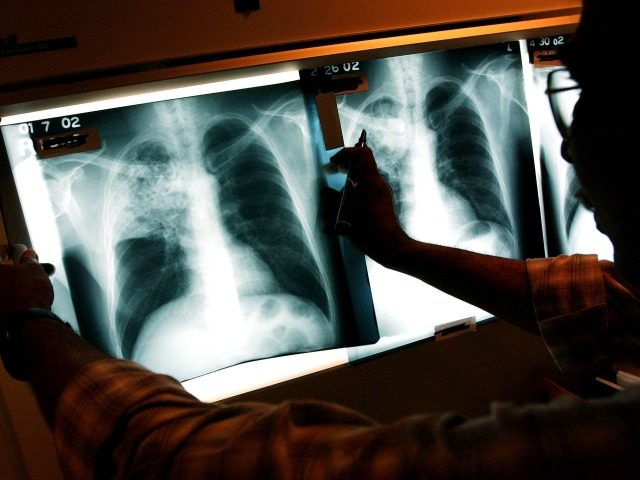Thirty-five percent of the 901 refugees resettled in Vermont by the federal government between 2013 and 2016 tested positive for latent TB infection, according to data provided to Vermont Watchdog by the Vermont Department of Health.
Officials with the Vermont Department of Health, however, refused to tell Vermont Watchdog how many of these refugees, if any, arrived with the active or infectious form of TB, or are currently being treated for active TB.
The population of Vermont is almost 630,000.
Roughly 70,000 refugees are accepted each year for resettlement around the United States, and are put on a fast-track to citizenship, with full access to the welfare state. President Barack Obama wants to sharply increase the inflow of refugees.
Other states have seen the disease threat posed by refugees resettled by the federal government increase in recent years. For example, the federal refugee program sent four refugees with active TB to Indiana in 2015. Between 2013 and 2015, eleven refugees with active TB were resettled in Florida.
As Vermont Watchdog reported last week:
Data from the Vermont Department of Health show that more than one-third of refugees resettled in Vermont test positive for tuberculosis.
Since 2013, about 900 refugees admitted to the Green Mountain State have been tested for tuberculosis, a potentially fatal infectious disease affecting the lungs. Of that number, 318 refugees, or 35.4 percent, tested positive.
Watchdog.org obtained the health data on Wednesday following reporting by Stateline that the disease may be making a comeback in the United States.
Refugees brought to the United States undergo TB tests as part of comprehensive health screenings. State health departments track the data to monitor cases and protect against public health crises.
According to IGRA (Interferon-Gamma Release Assays) blood test results from 2013 to the present, the highest percentage of incoming refugees to Vermont infected with TB occurred in 2013. That year, 108 refugees out of 248 tested, or 43.6 percent, showed positive for TB.
Test results showed slight improvement in subsequent years, with 34 percent of incoming refugees having TB in 2014 and 32 percent showing positive in 2015. Children under age 5 are excluded from the results, as they undergo tuberculin skin tests, or TSTs. . .
While active TB is fatal in half of cases that go untreated, Ben Truman, health policy and web program coordinator at the Vermont Department of Health, said only a handful of TB cases each year in Vermont are [infectiously] “active.”
News of the high rate of latent TB infection among Vermont refugees comes shortly after Mayor Christopher Louras of Rutland, Vermont announced that he intends to bring one hundred Syrian refugees into the small city this year. The decision was hidden from most area residents until it was presented as already in place.
As Vermont Digger reported last month:
RUTLAND — In a heated public meeting Wednesday, the members of the Rutland Board of Aldermen and community members scrutinized a plan to resettle refugees in this central Vermont city.
While some came in support of the proposal, the majority raised objections to the way the plan had been formulated.
The proposal, announced by Mayor Chris Louras last month, would bring 100 Syrian refugees to Rutland for resettlement over the course of a year beginning in October …
Many residents bristled at Louras’ approval of the project because he didn’t consult with city aldermen and they raised concerns about the impact the resettlement will have on the community.
In a meeting that stretched longer than three hours, the aldermen and residents expressed frustration with Louras’ decision, which they said was carried out behind closed doors and without an appropriate level of community input.
The high rate of latent TB infection among Vermont refugees is consistent with that found recently among other refugees resettled in other states–22 percent in Minnesota, 18 percent in Arizona, and 26 percent in Indiana.
A number of recent medical studies have concluded that the high rate of latent TB infection among refugees poses a health risk to the general population, where the latent, or non-communicable TB infection rate is only 4 percent.
Although only 10 percent of those with latent develop active TB, the majority of the foreign born cases of active TB reported in the Arizona are from those who arrived with latent TB that became activated.
The number of active TB cases in the United States declined for 23 years, but 2015 saw a 1.7 percent national increase in the number of active TB cases, compared to 2014. During this period, the percentage of active TB cases in the United States attributable to foreign born patients has skyrocketed, from 48 percent in 2000 to 66 percent in 2014.

COMMENTS
Please let us know if you're having issues with commenting.